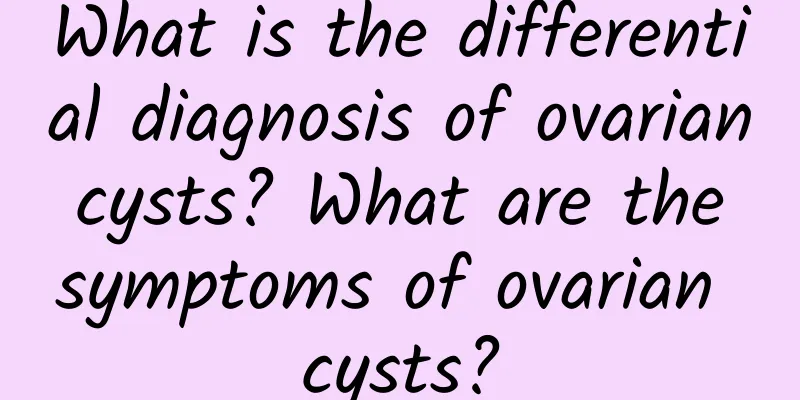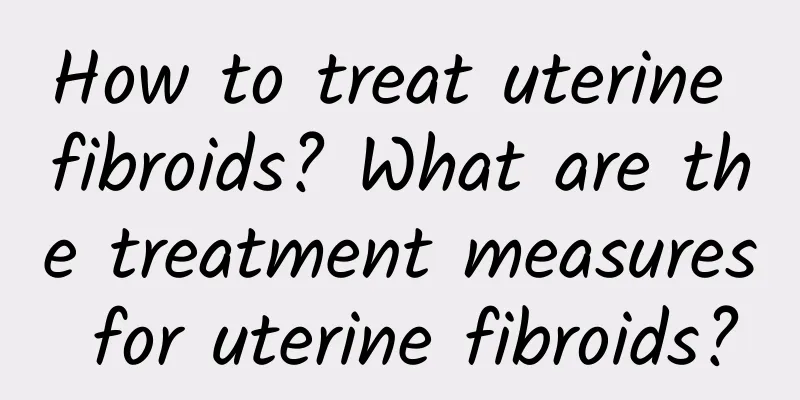What is the differential diagnosis of ovarian cysts? What are the symptoms of ovarian cysts?

|
What is the differential diagnosis of ovarian cysts? What are the symptoms of ovarian cysts? Ovarian cyst symptoms: 1. Thickened abdominal circumference and intra-abdominal tumor; 2. Menstrual disorders; 3. Abdominal pain, etc. Identification of ovarian cysts: 1 Simple cyst: If the follicular cyst is large and the granulocytes are squeezed into flat or cubic shapes, it cannot be distinguished from a simple cyst. If cumulus or residual squeezed granulocytes are found, it should be diagnosed as a follicular cyst. 2 Cystic granulocytoma: Occasionally, granulocytoma shows huge cystic changes, with the tumor tissue squeezed on the cyst wall in a plaque-like manner, but still having the characteristics of granular cells. Ovarian Cyst Diagnosis: 1. Ultrasound examination: B-ultrasound imaging can measure the location, size, shape and nature of the tumor. 2 Radiological diagnosis: Barium meal or barium enema, air contrast radiography can be used to understand whether there is a tumor in the digestive tract. CT pelvic tumor location and qualitative pelvic tumor, to understand whether the liver, lung, and retroperitoneal lymph nodes have metastasized. Pelvic lymph node radiography can determine whether there is lymphatic metastasis of ovarian tumor milk. 3 Laparoscopy: The origin and general condition of the tumor can be directly observed, as well as the abdominal cavity and septa of the entire pelvic cavity to determine the extent and duration of the lesion. Ascites can be used for cytological examination, or suspicious tissue for pathological examination. However, large masses or adherent masses are prohibited. 4 Cytological examination: Cytological examination of ascites by extracting ascites through abdominal or posterior fornix puncture is helpful in diagnosing ovarian malignant tumors. 5. Tumor marker examination: Patients with embryonal carcinoma and endodermal sinus carcinoma have high alpha-fetoprotein AFP concentrations, and aFP greater than 20μg/L is positive. β-hCG determination has diagnostic value for primary ovarian choriocarcinoma and ovarian germ cells mixed with choriocarcinoma components. Radioimmunoassay of cancer antigen CA125. CA125 greater than 65U/ml is positive for epithelial cancer and has a high diagnostic significance. Lactate dehydrogenase LDH is helpful in diagnosing dysgerminoma. |
<<: Can uterine fibroids heal on their own?
>>: Causes of pelvic inflammatory disease in women
Recommend
What causes abnormal leucorrhea after menopause?
Menopause is usually a permanent cessation of men...
How is Endometriosis Diagnosed?
There are many types of gynecological diseases in...
What is the cause of hydatidiform mole?
Hydatidiform mole is a pregnancy-related disease,...
How to prevent ectopic pregnancy in daily life
Ectopic pregnancy is common in life, and it can c...
What are the dangers of cervical erosion
Cervical erosion is not an independent disease, b...
The treatments for primary dysmenorrhea include:
Many women with dysmenorrhea do not pay attention...
What are the disadvantages of abortion?
Nowadays, many female friends think of going to t...
What is the difference between curettage and painless abortion? What are the harms of doing too much painless abortion to the body?
Painless abortion and uterine curettage are both ...
Warning: Dysmenorrhea is harmful if not treated
There are serious harms if dysmenorrhea is not tr...
Can multiple miscarriages cause uterine prolapse?
Can multiple miscarriages cause uterine prolapse?...
Can folk remedies be used to treat cervical erosion? Women can try three folk remedies to treat cervical erosion
What are the folk remedies for treating cervical ...
Do you know what are the early symptoms of ovarian cysts?
What are the early symptoms of ovarian cysts? Wha...
Dysmenorrhea usually causes the following hazards:
Many women experience dysmenorrhea during their m...
What harm does menopause bring to women?
Menstruation will accompany women for most of the...
Why does my stomach hurt when I have a miscarriage? There may be these 4 reasons
After a miscarriage, the uterus will continue to ...









